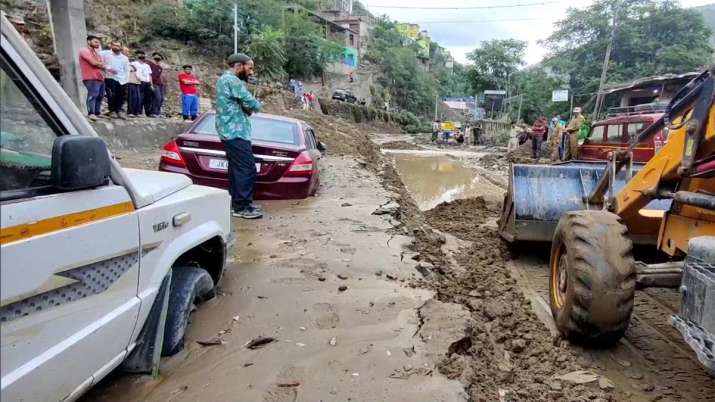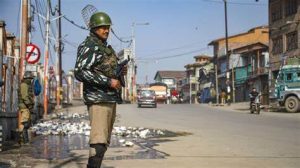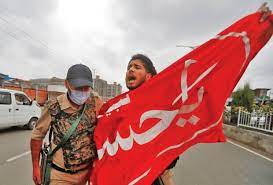
Melting Glaciers to Cloudbursts, How climate change is impacting Kashmir
By: Syed Shadaab Gillani
In its first meeting last week, the Reconstituted Committee of Climate Change Program of the Department of Science and Technology (DST) held a dialogue on climate change at the University of Kashmir in which top scientists from DST and other reputed institutions participated. The Committee aims to develop strategic knowledge on issues of climate change in view of its growing challenges.
The expert-level deliberations indicate concerns underscored by the UN’s Intergovernmental Panel on Climate Change (IPCC) report of 2022 stating that the impact of climate change on India is much clearer. Climate research is considered critical to formulating robust climate action plans.
The heat records are being shattered across Jammu and Kashmir and at the same time frequent rainfalls, hailstorms and flashfloods are on the rise.
For the last two months, especially in July, the highest rainfall was recorded in the Kashmir region, triggering a dozen flash floods in the Valley that caused damage to the agricultural fields and other assets. In July, at least 15 Amarnath Yatra pilgrims lost their lives after a cloudburst hit near the Holy Amarnath cave triggering flash floods. On the other hand, frequent landslides and shooting stones triggered by heavy rains at various places have blocked the J&K national highway many times.
Dr Mohammad Muslim, Assistant Professor, of Environmental Science at the University of Kashmir indicates that the global phenomenon is casting its shadow on the Himalayan region and the recent climate change in J&K has had a huge impact on the glaciers.
“Climate change has impacted freshwater resources by disturbing the hydrological cycle and we can see increased activity of Indian summer monsoons winds into the valley,” said Muslim.
Linking the phenomenon with increased rainfall, he says, “Our main source of water comes from the glaciers which are already melting at a rapid speed, and additional rainfall in the summer months means additional water in the rivers that is a worrisome issue.”
He further blames ‘deforestation’ for climate change and says, “The pace at which we are cutting down forests in Kashmir is worrying; when we cut down the trees the stored carbon is released into the atmosphere again as CO2. This is how deforestation and forest degradation contribute to global warming and forests play a strong role in water balance.”
Scientists like Muslim believe that the climate crisis is increasing, but there are ways to secure our future. These actions fall into one of two broad categories: Climate change adaptation and Climate change mitigation.
Mitigation involves reducing the impact of climate change by reducing the flow of greenhouse gases (GHG) into the atmosphere, while adaptation would require altering our behaviour and adjusting to the actual or expected future climate.
“The need of the hour is to aware and educate people about climate change through different methods, making them aware and future-ready can help us in many ways,” says Muslim.
Their recent study, ‘Time series analysis of climate variability and trends in Kashmir Himalaya’ published in Ecological Indicators also suggested that if current trends continue, this changing precipitation pattern may have a negative impact on the environment that will have a significant impact on the region’s food security and ecological sustainability.

